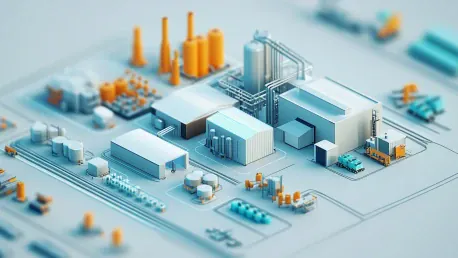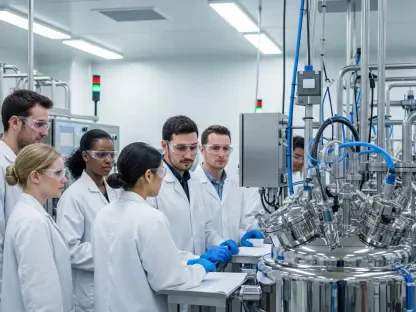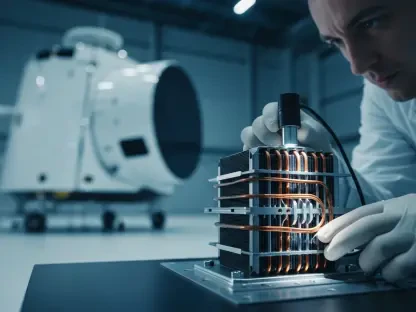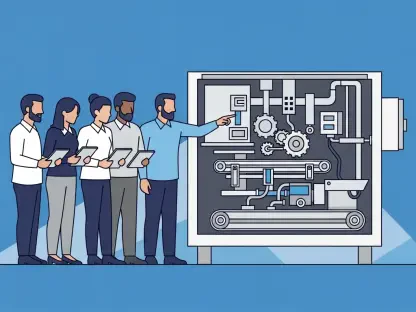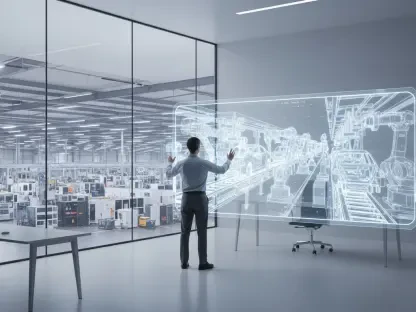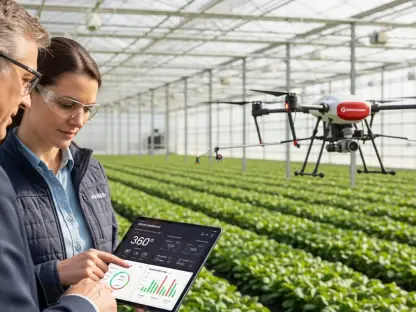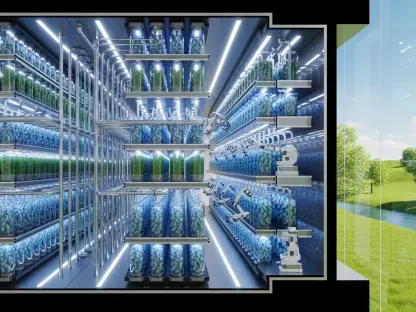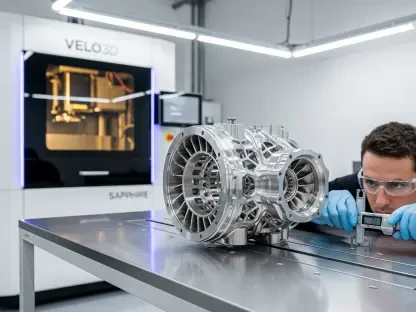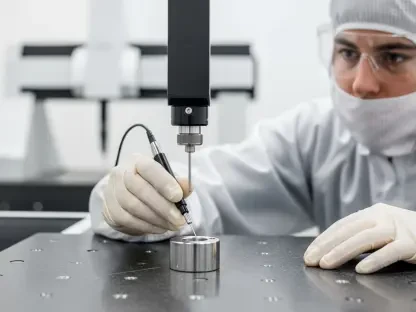The manufacturing industry is undergoing a grand transformation, driven by the relentless progress of Artificial Intelligence (AI) and cutting-edge digital tools. These innovations are not just enhancing operational efficiency but also paving the way for smarter, more sustainable manufacturing environments. As the landscape rapidly evolves, manufacturers are adopting these advanced technologies to meet market demands, improve productivity, and promote sustainability. Let’s delve into how AI and digital tools are making waves in modern manufacturing and revolutionizing the industry.
Advanced AIoT: Merging AI with IoT
The integration of Artificial Intelligence with the Internet of Things (AIoT) is revolutionizing factory operations. AIoT imbues devices with the capability to self-monitor, predict issues before they arise, and optimize processes in real-time. Unlike traditional methods, AIoT systems use data acquired from sensors and machines to make informed decisions instantly, thereby minimizing downtime and enhancing overall productivity. This seamless integration ensures that manufacturing processes can respond adaptively to evolving operational requirements.
Consider predictive maintenance: By analyzing data from various sensors, AIoT systems can predict equipment failures before they actually occur. This ability not only reduces maintenance costs but also significantly boosts machine uptime. Additionally, AIoT improves worker safety by continuously monitoring environmental conditions and machinery status. In effect, AIoT serves as a comprehensive tool for real-time decision-making, contributing to safer and more efficient factory environments.
Smart manufacturing environments are becoming a reality thanks to AIoT. Factories equipped with intelligent devices can seamlessly adapt to changing production demands, ensuring that manufacturing operations are as efficient and flexible as possible. This adaptability helps manufacturers respond swiftly to market changes and customer needs. As a result, businesses can maintain competitive advantages while also ensuring operational stability and productivity. The incorporation of AIoT stands as a testament to the progressive shift towards intelligent and adaptable manufacturing systems.
Enhancing Robotics: AI in Industrial Robots
Industrial robots have evolved from simple, repetitive task performers to intelligent, AI-driven workhorses. AI enhancements allow these robots to handle complex tasks with greater efficiency and accuracy. Machine learning algorithms enable robots to learn from experience, thereby improving their performance over time. This evolution from basic automation to sophisticated intelligence marks a significant step forward in manufacturing technology, enabling more precise and effective operations.
AI-powered robots are now capable of predictive maintenance, reducing the likelihood of unexpected breakdowns. For example, these robots can analyze their own performance metrics to detect anomalies that might indicate future failures. By taking preventive action, they minimize the risk of costly disruptions in the production line. This predictive approach ensures continuous operations and reduces the financial impact of unexpected downtime, making manufacturing processes more reliable and efficient.
Robots are also becoming more collaborative, working alongside human operators to perform tasks that require precision and adaptability. This human-robot collaboration, facilitated by AI, optimizes workflow and maximizes productivity, making manufacturing processes faster and more reliable. The synergy between human ingenuity and robotic precision allows for more complex and versatile production capabilities, pushing the boundaries of what is achievable in modern manufacturing settings. The enhancement of industrial robots through AI opens new possibilities for efficiency and innovation.
Sustainable Manufacturing: The Role of Smart Building Technologies
Sustainability is a key focus in today’s manufacturing landscape, and smart building technologies are at the forefront of this shift. These technologies utilize AI and IoT to manage energy consumption, reduce waste, and improve overall environmental impact. For instance, smart systems can regulate heating, ventilation, and air conditioning (HVAC) to optimize energy use, leading to substantial cost savings and reduced carbon footprint. This intelligent approach to building management translates into significant benefits for sustainable manufacturing practices.
Gianluca Cassanova of ABB Electrification highlights how smart building technologies are crucial for achieving zero-waste and circular economy initiatives. By monitoring resources in real-time, manufacturers can ensure that their operations are both efficient and eco-friendly. These systems support the use of renewable energy sources, further enhancing sustainability efforts. The integration of smart building technologies not only supports environmental goals but also bolsters operational efficiency and resource allocation in manufacturing environments.
Moreover, the integration of AI in smart buildings aids in predictive maintenance and operational efficiency. By constantly analyzing data, these systems can forecast maintenance needs and optimize resource allocation, ensuring that the manufacturing process is not only sustainable but also highly efficient. This proactive approach minimizes energy waste and reduces costs associated with overconsumption or unexpected failures. The role of smart building technologies in sustainable manufacturing underscores the importance of adopting advanced digital solutions in the pursuit of environmentally responsible operations.
Boosting Operational Efficiency: Predictive Maintenance and Data Analytics
Predictive maintenance, fueled by AI and machine learning, is transforming how manufacturers manage their assets. The use of predictive analytics allows for accurate forecasting of equipment failures, ensuring maintenance is performed only when necessary, rather than at scheduled intervals. This approach significantly cuts down maintenance costs and increases machine uptime. The transition from reactive to proactive maintenance strategies marks a pivotal shift in optimizing operational efficiency and extending the lifespan of critical machinery.
Machine learning algorithms analyze data from various sources to identify patterns and make predictions with over 99% accuracy. This high level of precision is crucial in heavy industries where equipment downtime can lead to substantial financial losses. Such proactive maintenance strategies ensure seamless production cycles and extend the lifespan of machinery. The ability to predict and prevent potential issues before they occur represents a game-changing advancement in manufacturing efficiency and reliability.
Thermal imaging technology is another tool aiding predictive maintenance. By detecting heat patterns and anomalies, manufacturers can address issues before they lead to major disruptions. Combining thermal imaging with AI analytics further enhances the capability to maintain smooth operations. This synergy of technologies provides a comprehensive approach to monitoring and maintaining equipment, thus reducing potential downtime and preventing costly operational interruptions. The adoption of these advanced tools signifies a transformative step towards more efficient manufacturing practices.
Cloud-Based Solutions: Empowering Agile Manufacturing
Cloud-based solutions, particularly in Electronic Data Interchange (EDI) and Enterprise Resource Planning (ERP) systems, are empowering manufacturers with unprecedented agility and security. Traditional EDI systems are being replaced by cloud-based alternatives that offer enhanced accuracy, flexibility, and real-time data processing. This shift allows manufacturers to streamline processes and maintain data integrity, ensuring operational efficiency in a dynamic market environment.
These cloud solutions enable manufacturers to respond quickly to changes, maintain data integrity, and streamline processes. For mid-sized manufacturers, cloud-based ERP systems provide a balanced solution by offering robust functionalities akin to larger enterprises but at a manageable cost. They help in maintaining operational efficiency without overwhelming resources. The flexibility and scalability of cloud-based systems make them ideal for manufacturers looking to optimize their operations and enhance competitiveness.
Salesforce’s industry-specific capabilities also play a vital role in manufacturing sales enablement. By incorporating advanced automation for sales and customer service workflows, these cloud solutions ensure that manufacturers can manage their sales operations efficiently, driving growth and customer satisfaction. The integration of Salesforce solutions enhances the ability of manufacturers to deliver tailored customer experiences and improve overall sales performance. The adoption of cloud-based solutions highlights the importance of agility and adaptability in modern manufacturing strategies.
AI Innovation Hubs: Collaboration for a Brighter Future
The manufacturing industry is experiencing a significant transformation due to the rapid advancements in Artificial Intelligence (AI) and state-of-the-art digital tools. These groundbreaking innovations are not merely boosting operational efficiency but also creating smarter and more sustainable manufacturing environments. As this industry landscape evolves at a quick pace, manufacturers are increasingly adopting these advanced technologies to satisfy market demands, enhance productivity, and promote sustainability. From predictive maintenance powered by AI to smart factories using Internet of Things (IoT) technology, the integration of these tools is enabling manufacturers to optimize their processes and reduce waste. Furthermore, the use of AI-driven analytics is providing deeper insights into production workflows, allowing for more precise decision-making. Overall, the infusion of AI and digital tools is profoundly reshaping modern manufacturing, heralding a new era where efficiency and sustainability go hand in hand. Let’s explore how these technologies are revolutionizing the industry and setting new standards for the future.
